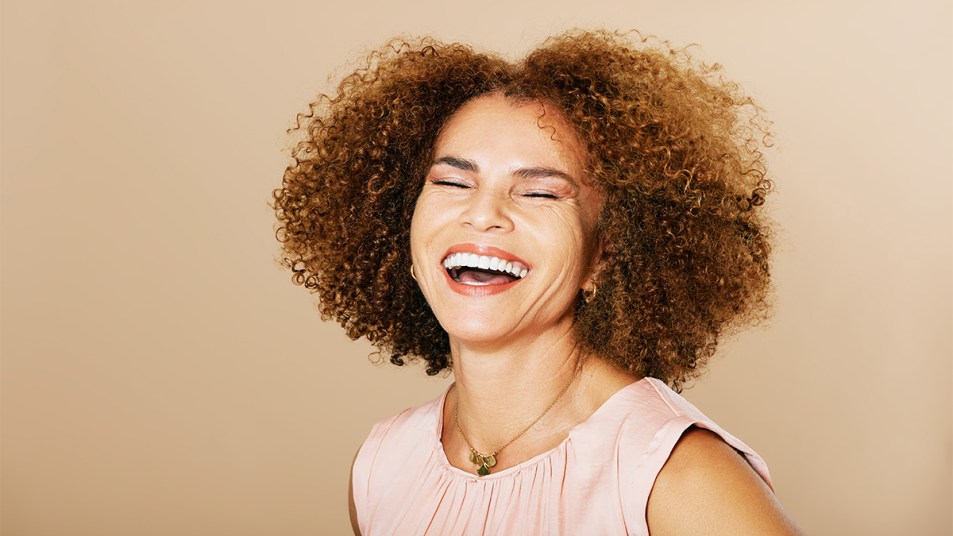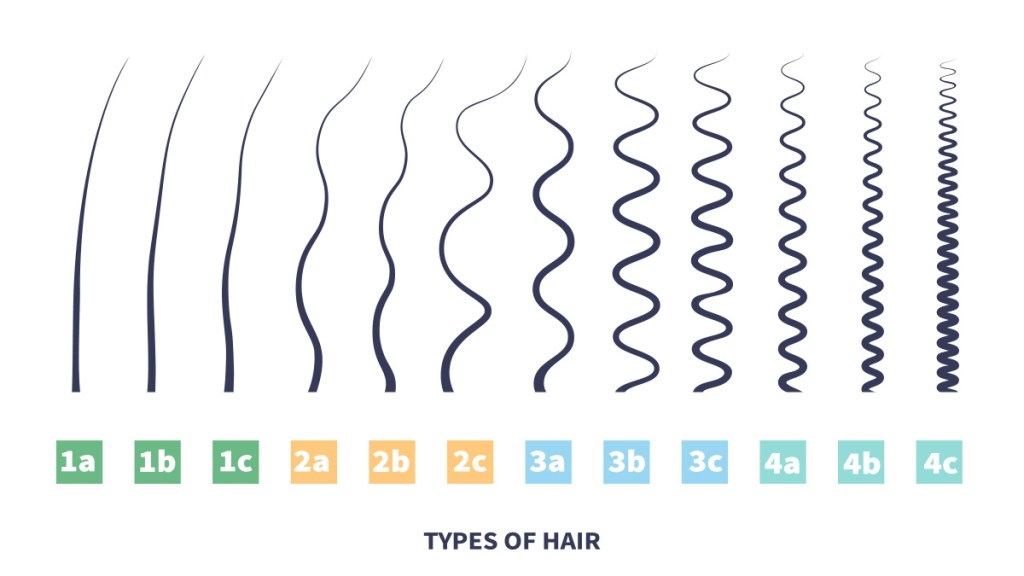Got Curls? Use This Chart To Understand and Optimize Your Curl Type
Give your curls the TLC they deserve.

Curly hair is both a blessing and a curse. Beautiful as it is, it can also be difficult to style, frizz up in the summer, and require costly products — to say nothing of finding the right styling products, which is its own challenge because there are so many unique types of curly hair, and each requires its own hair styles and care schedule. Add to this the fact that most women with curly hair don’t know what their hair type is.
Knowing your curly hair type, however, is the key to both keeping your curly hair soft and healthy, and getting runway-ready curls every day. Below is an explanation of each curl type within the curl chart, plus how to care for it. Don’t know what a curl chart is? Read on.
What is a curl chart?
The best way to figure out your curl type is by using the curl classification system created by Andre Walker (and perfected by stylists and experts since the late 1990s). Along one side of the classification system, you have the curl level of your ringlets, which can include straight but typically starts with wavy. Along the other side of subcategories, you have the size of the curl or coil. Here’s a closer look at what you can expect from each of the types within the hair chart.

TYPE 2 CURL GROUP
Type 1 hair is essentially straight hair. That means that Type 2 hair is the next step, usually classified as wavy. Within this group are three categories: Types 2A, 2B, and 2C.
Type 2A
2A, which includes the loosest hair strands, is typically the base — or starting point — for the curl chart. It can be fine or coarse, but it’s recognizable by its loose “s” pattern.. Type 2A hair is relatively easy to straighten, but it may be prone to frizzing and dryness, and it can be weighed down easily. Hydrating the hair and using light-weight products like curl cream are important. Also, use heat protection before blow drying and straightening.
Type 2B
2B hair also falls in the “wave” category within the curl chart. The B, however, indicates that the curls are a little more defined than those in the 2A category. They may resemble a kind of beach wave. As waves, they’re prone to the same dry hair and hair texture issues as 2A hair.
Type 2C
The last group within the wave family of curls is type 2C curls. Here, the “s” curl that defines the category appears. The texture of these curls can be quite smooth, but it’s easy to damage them with heat exposure, and frizz and dryness are common. Using leave-in conditioners can be useful for helping to add hydration to hairstyles below the surface.
Watch Bright Side’s video below to find out more about type 2 curls.
TYPE 3 CURL GROUP
Type 3 is where we move from wavy hair to spiraled coils. These curls include different types of natural curls, from loose-but-defined locks to tighter corkscrews. They are often smooth and shiny, but they can become frizzy or dry with excessive exposure to heating products.
Type 3A
Type 3A curls are larger and tend to maintain their size rather than shrinking during styling. Straightening 3A curls can be very time-consuming, and it’s especially important to use heat protection when you do. That said, these curls do well with a hands-off approach. Avoid overwashing them, instead shampooing every five to seven days, depending on how your hair responds. Leave-in conditioner and regular hair masks help with moisture. Once styled, avoid touching 3A curls — this applies to your hands and your brush — as that’s how frizz and fluff develop.
Type 3B
3B curls are lovely to look at, but they need a little more care than some of the other curl patterns. These curls are tighter, with width equal to that of a pen or pencil, and they have bounce and spring up to a few inches. That said, remember when viewing the hair types chart that it’s possible to have combination curl types. The type 3B hairstyle is a great example of this, as the hair toward the front is usually a little looser and can be naturally used to frame the face, while the curls get smaller toward the back..
These curls are prone to dryness and don’t need to be washed very often. For flexible, soft, and easy-to-style 3B curls, consider adding heat to your conditioning process. Steam showers and caps that can be warmed are useful for nurturing your curls and keeping hairstyles looking healthy.
Type 3C
The last type of hair found in the spiraled curls section is 3C hair, which is recognizable by its much tighter curls. This type is marked by tight corkscrew curls and voluminous hair (thanks to the curls’ closeness to one another). To style this curl type, use products like mousse and styling creams while hair is still wet. This will add hydration, as well as define and soften your curls.
Watch BiancaReneeToday’s video below to learn more about type 3 curls.
TYPE 4 CURL GROUP
Type 4 hair, often referred to as afro-textured, is common among people of Sub-Saharan African descent. The kinky and coily hair types that fall under this umbrella tend to have a lot of volume because of their tightly packed curls. The texture of these hair types varies substantially, but they typically feel soft, fine, or spongy to the touch. The small curls and zig-zag curls found under this umbrella can shrink a lot, which is important to consider when styling type 4 hair.
Type 4A
In the type 4A hair category, you’ll find more s-shaped waves. When properly cared for, they can be pliable and easy to style. Using products that moisturize and hydrate type 4 hair below the surface, such as a curl defining cream, is important to maintaining its root, shaft, and strand health.
Type 4B
These types of curls are recognizable by their z-shaped appearance, which develops as a result of being more densely packed. The hair type number, of course, refers to the tightness of the curl, and 4B curls are quite small. This style has defined zig-zag patterns, and you can enhance that pattern with the right products and practices. Because this hair type is porous — and thus prone to breakage and damage — taking proper care of it is vital. Hydration is essential for preventing breakage, so use deep conditioners and conditioning masks regularly.
Type 4C
4C hair is very tightly coiled. Like 4B hair, it has a z-pattern. You may, however, need to stretch the curls out to actually see it, as the hair’s tight formation causes shrinkage of hair length. More than all the other types of curly hair, 4C hair is fragile, especially when it comes to heating and styling. If you do apply heat, be sure to use protective products that improve hydration. That said, protective patterns are the recommended hair style for this category.
Watch Breanna Rutter’s explainer below to find out more about type 4 hair.
Curls Aplenty
When you know your curly hair type, it’s easier to find the right hair products and work with your hair stylist to get the look you love best. The curly hair typing system from Andre Walker provides a framework for understanding your curls, and is useful for identifying the best products for styling, hydration, detangling, and more. Have fun giving your curls the TLC they deserve!












